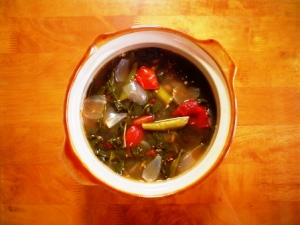Filipino Food, have you tried balut yet?
The history of Filipino food dates back to the pre-Spanish era, the Malay’s introduction of boiling, roasting and steaming of the livestock and sea food they have.
It was also the Malays who introduced the rice as the staple food of the Filipinos.
From there, influences from the Spaniards, Chinese, Indians, Americans and travelers from other countries added to the way Filipinos prepare their food.
Filipino Food – Spanish Influence
The Spanish settlers during the Spanish era also introduced many spices that are now common in Filipino food.
They also introduced different ways of preparing the food, such as sautéing and preserving. So you can now enjoy many Filipino versions of original Spanish dishes, such as the paella with local shellfish, prawns and shrimps and the tapas or dried meats.
The famous Filipino dish, adobo, which you should not miss, was also introduced by the Spanish settlers.
When the Chinese arrived in the country they introduced the Filipinos into Chinese dishes. They opened up noodle shops and from there the people learned to prepare many of the Chinese noodles and congee.
Today the
pansit or noodles and the
lugao or congee are now considered as common Filipino food.
There is even the famous Pancit Malabon from the Malabon, one of the cities in Manila. If you cannot go to Malabon to sample this unique dish, you should find one of the restaurants in Manila which offers this delicacy.
Other countries eventually contributed to the rich Filipino food of today. If you eat a certain dish today, you can probably trace its origin from other countries. However, all of the dishes are now Filipino versions that are even richer than the original.
Filipino Food – Filipino Variations & Originals

Saluyot Leave Soup
Of course, there are still the original Filipino dishes which can only be found here in the Philippines. These are the ones invented over the years by Filipinos from different regions.
For instance, there are the native rice cakes. These rice cakes come in different variations. Some are made from rice and coconut mixes, some are made from corn and other root crops.
If you are visiting the Philippines during Christmas season, you should definitely try the
bibinka, rice cake made from a special variety of rice, coconut meat, local cheese and the
itlog na pula or red egg (special salted egg). You should try this with the local tea or
salabat (ginger tea) which is given by the
bibinka vendors for free.
Filipino Food – Street Vendors
Then of course what you should really try is the street food.
These are the truly exotic dishes found only in the Philippines. There is actuallya huge variety for you to try and enjoy; some are simply unique while others are truly exotic.
From the simple ones there are the taho or snack made from beancurd, caramel syrup and tapioca pearls. You can find taho vendors around shouting, “taho”.
Then there are street food stalls where you can find “kwek-kwek” (fried quail eggs in batter) and “tokneneng” (fried chicken and duck eggs in batter).
Other street food stalls offer “betamax” or barbequed chicken blood, “isaw” or barbequed chicken and hog intestine, “addidas” or barbequed chicken feet and “helmet” or barbequed chicken head.
Then lastly you must not forget to try, at least try, the famous or maybe infamous, “balut” or the boiled unhached chicken or duck eggs.
Similar with the “taho”, vendors shout “balut” around the streets. This is not everyone’s favourite, truth be told, I won’t touch it, it is definitely not for me! I know I’m a chicken.
Street food is not for everyone, specially tourists, but it is there and a certain amount of commonsense is required. If it doesn’t look or smell good, then don’t eat it! .
Now have you tried any Filipino Cuisine, these are dishes unique to the Philippines?
Have a look here at other Philipine dishes.
What is you favourite Filipino Food, Dish or Recipe?
What Filipino food can you not live without? Do you have a great story about this? Share it!
What Other Visitors Have Said
Click below to see contributions from other visitors to this page...
Return to Philippines Travel Guide Home Page.
Enjoy this page? Please pay it forward. Here's how...
Would you prefer to share this page with others by linking to it?
- Click on the HTML link code below.
- Copy and paste it, adding a note of your own, into your blog, a Web page, forums, a blog comment,
your Facebook account, or anywhere that someone would find this page valuable.
